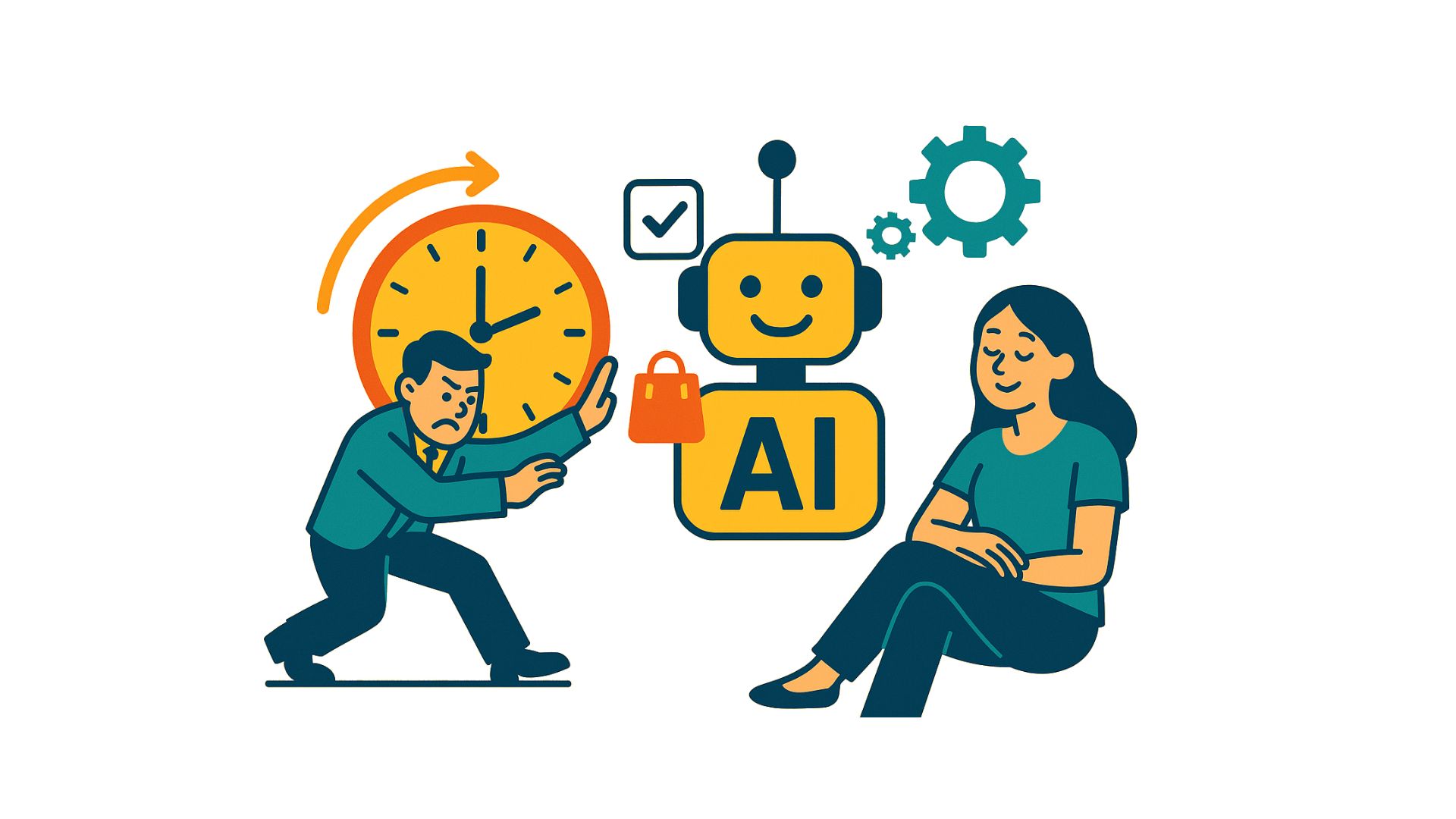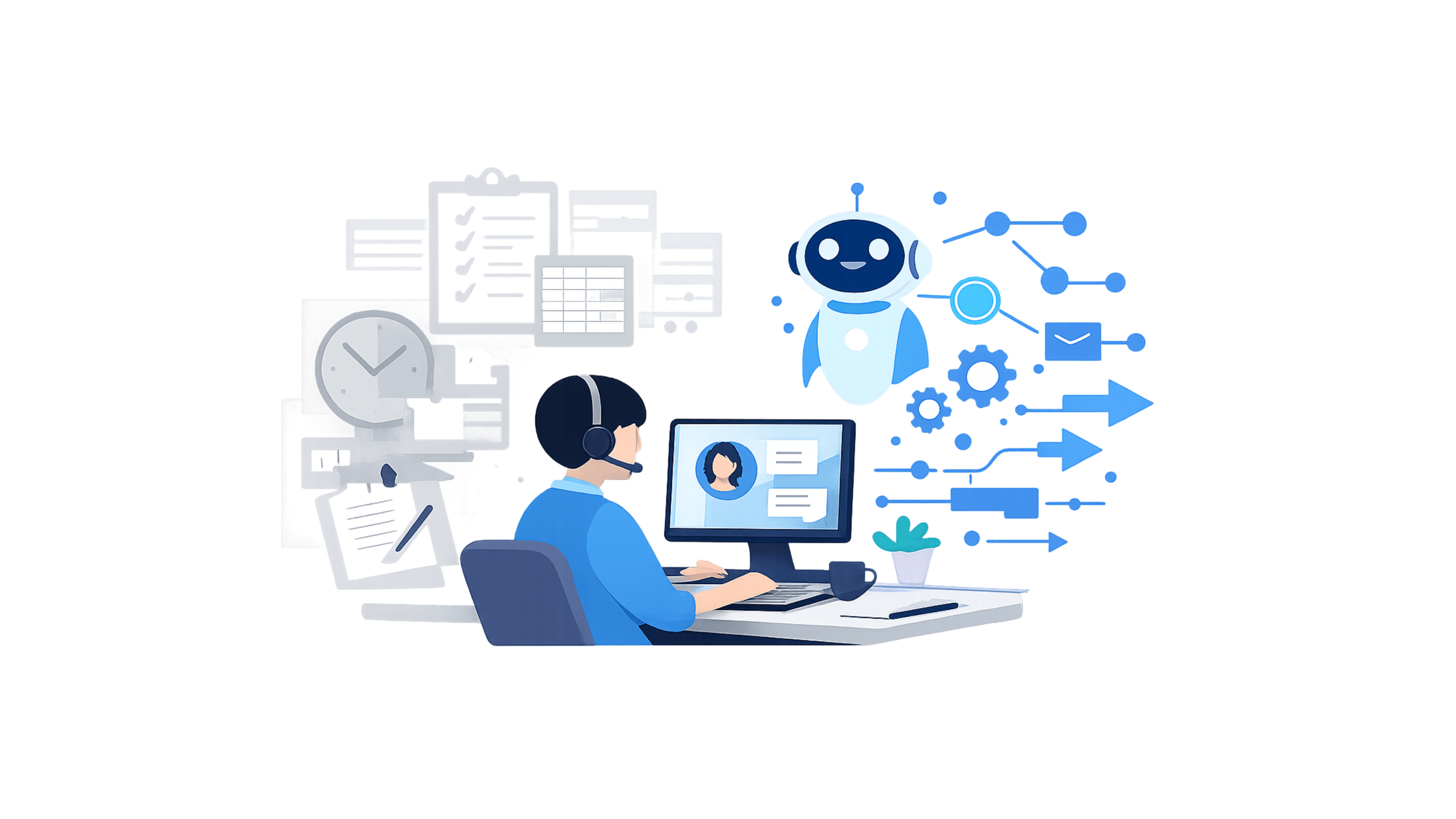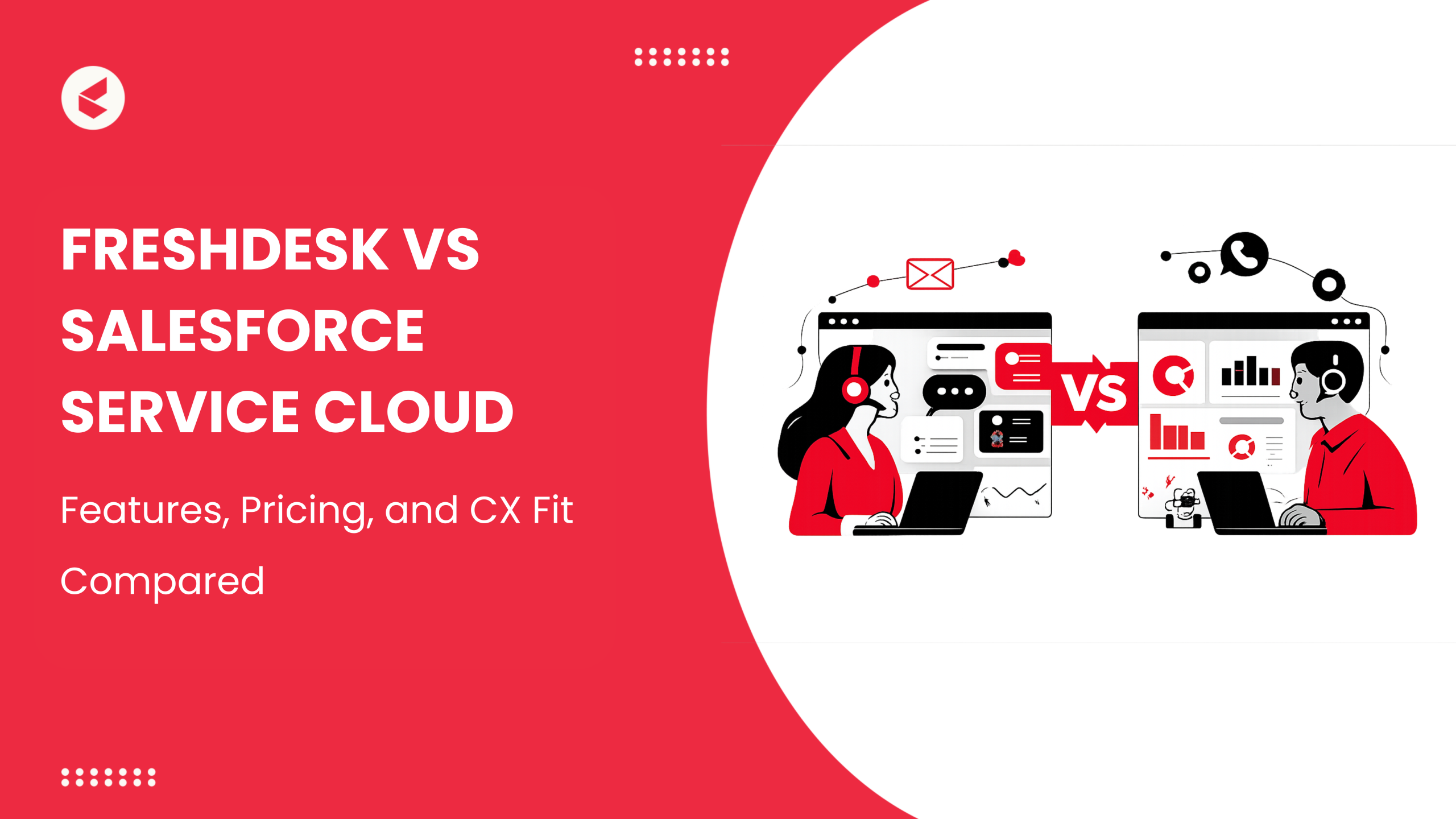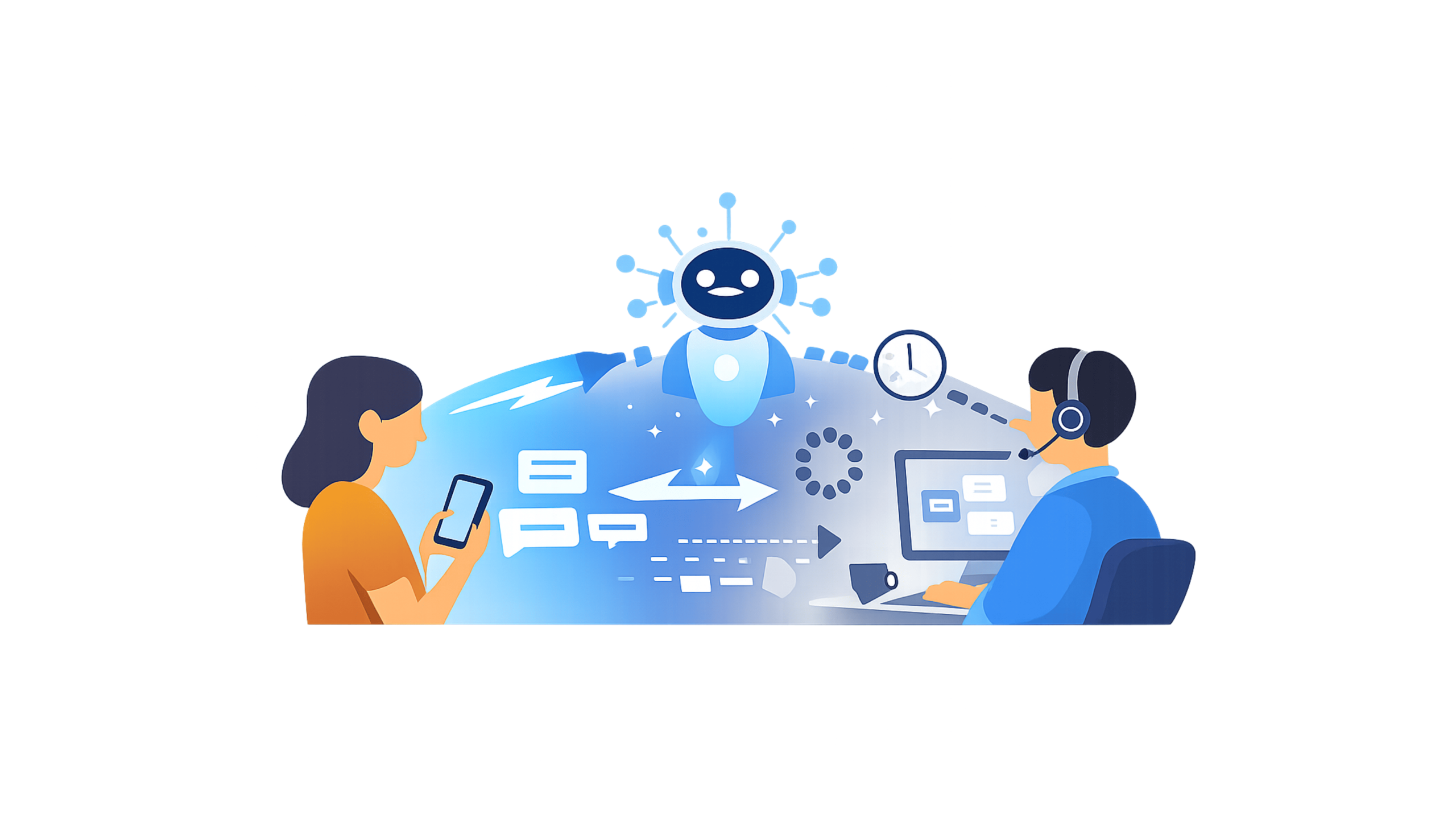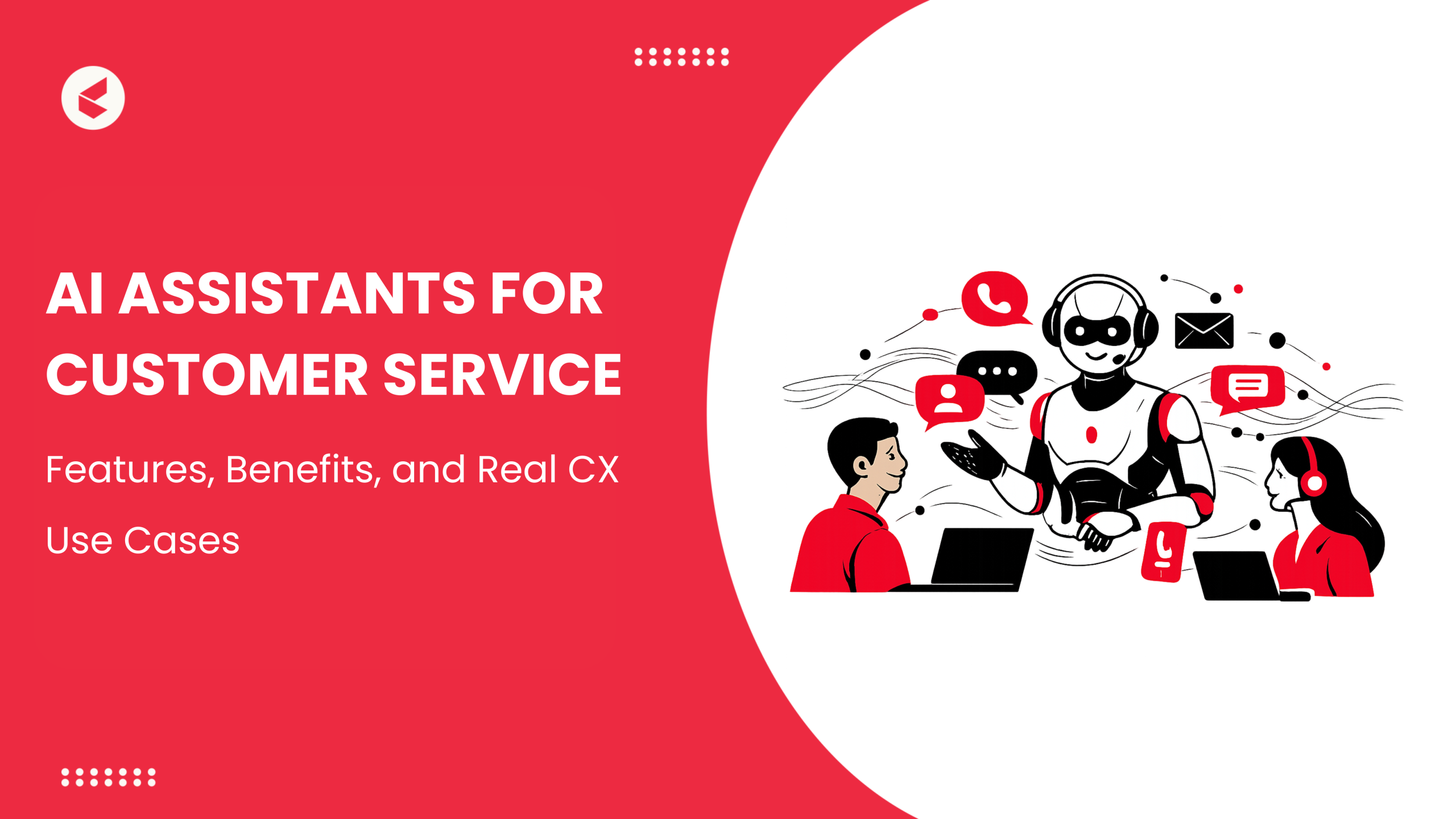You’ve seen it happen. A morning check-in turns into an evening Slack reply. The team’s calendars are packed, their minds stretched, their energy fraying. They’re working longer but producing less. Focus time is constantly interrupted. Real progress feels like a luxury.
Welcome to the infinite workday, a reality where boundaries between “work” and “rest” dissolve. Hybrid schedules stretch across time zones. App sprawl drains attention. Meetings multiply. And the expectation to always be “on” has quietly become the norm.
Productivity suffers. So does morale.
Nearly 70% of employees waste over 20 hours a week just searching for information across scattered tools (Quickbase Research). As a leader, you know this isn’t sustainable. And tech isn’t the enemy. But how is it used? That needs to change.
You need to rethink how workflows work. This blog explores how AI agents help teams escape the endless grind and bring sanity back to the workday.
Why Reclaiming Time Matters—and What Happens If We Don’t
When your team can’t focus, everything slows down.
Sustained focus fuels:
- Creative thinking: New ideas need uninterrupted mental space.
- Improved choices: Transitioning between contexts diminishes clarity and decision-making.
- Employee wellness: Mental fatigue increases due to excessive digital demands.
- Retention rates: High performers burn out when they’re always in reactive mode.
Without action, the costs are steep:
- Burnout results in decreased morale and lack of engagement. A Gallup survey showed that employees experiencing burnout are 2.6 times more inclined to resign and 63% more prone to report illness.
- Turnover rises, draining budgets on backfills and training.
- Brand impact grows as poor service and internal chaos spill into customer experience.
Here’s the truth: attention is a finite resource. When your teams lose control of their time, performance suffers. But this isn’t just a people problem; it’s a systems problem.
The good news? The trend can be reversed. Your team may transition from reactive to strategic with the help of intelligent automation and the appropriate AI agents. They’ll regain the time and clarity required to succeed.
From Tools to Experience: The Evolution of Employee-Facing Tech
Tech at work has evolved, but not always for the better.
First came email. Then, SaaS tools flooded the workspace. Next, we saw collaboration suites trying to unify the chaos. Now, leading firms are building experience platforms designed for how employees actually work.
Here’s why it matters:
- You’re not just supporting workflows. You’re shaping the employee experience (EX).
- EX now directly impacts customer experience (CX) and operational outcomes.
When your tech stack hinders instead of enhances, productivity decreases. Your team dedicates time to handling tools rather than addressing issues.
To fix this, you need more than digital access. You need an AI-first design where intelligent systems do the heavy lifting and bring focus back to core work.
In short, the future of work isn’t about more tools. It’s about the smarter ones who prioritize experience over activity.
The AI-First Imperative in Modern Business
You’re dealing with more data, more tools, and faster customer demands than ever before. Incremental automation won’t cut it anymore.
Legacy systems often rely on rules-based scripts or static flows. They reduce manual work but fail to adapt in real time. This creates a significant void when your teams must make instantaneous decisions throughout customer journeys.
To keep a competitive edge, your company requires AI-centered design platforms that learn, evolve, and operate with little guidance.
What sets AI apart?
- Real-time decision-making: AI can process large volumes of data in milliseconds. This helps initiate prompt responses.
- Customized actions: It adjusts to client behavior and past interactions, instead of relying solely on set templates.
- Context sensitivity: It derives insights from discussions and utilizes that context throughout various platforms.
In the current rapid-paced setting, both speed and accuracy are important. Static tools slow you down. AI agents don’t.
That’s why businesses are shifting from passive automation to intelligent agents built to help your teams reclaim time, focus, and strategic clarity.
Meet the AI Agent: Autonomy Beyond Chatbots
Most chatbots follow scripts. They’re helpful but limited. You ask a question, and they offer a predefined reply. That’s not autonomy; it’s automation.
Now, meet the AI agent.
AI agents are agentic AI systems. That means they don’t just react; they perceive, decide, and act across multiple systems. They work across apps, access live data, and adapt their decisions in real time.
Here’s how AI agents are different:
- Beyond single tasks: They handle complex workflows, not just FAQs or simple triggers.
- Real orchestration: They coordinate actions across tools: CRMs, helpdesks, knowledge bases, calendars.
- Decision-making built in: Agents assess context and choose what to do next without waiting for your input.
They’re also built responsibly:
- Orchestration layers manage how the agent interacts with different systems.
- Guardrails ensure decisions are consistent with business regulations and compliance requirements.
- Human-in-the-loop supervision provides your team with authority when significant decisions are at stake.
In summary, AI agents are not just tools; they’re colleagues. They reduce cognitive burdens, remove repetitive activities, and enable your team to concentrate on valuable tasks.
It’s not about replacing talent. It’s about amplifying it—safely, intelligently, and at scale.
Three Pillars of Agent-Powered Productivity
Forget the noise. These three AI-powered pillars are redefining how teams get real work done.
1. Cross-Platform Task Automation
Repetitive tasks chip away at focus and momentum. With cross-platform task automation, AI agents handle low-value work before it ever reaches your employee’s desk.
These agents can work across multiple tools and workflows. They connect the dots between ticketing systems, communication platforms, knowledge bases, and CRMs, all without human intervention.
Here’s how they reduce workload friction:
- Instant resolutions: Password resets, address changes, or order lookups are completed in seconds.
- Smart routing: Requests get directed to the right workflow or person without manual triage.
- Seamless approvals: Routine approvals happen automatically, based on predefined conditions.
- Data syncs: Entries update across platforms, eliminating double work.
This protects cognitive space. Your team spends less time clicking and more time thinking.
Your team shouldn’t act as the glue between apps. Let AI agents handle the handoffs—quietly, quickly, and reliably. That’s how you reclaim hours each week, one micro-task at a time.
2. LLM Multiverse at Your Fingertips
Large language models (LLMs) have changed the game, but one-size-fits-all models don’t meet every business need.
That’s where the LLM multiverse comes in.
With access to multiple domain-tuned models, your team can use the right tool for the right job without leaving their flow. Instead of a general chatbot for everything, AI agents now tap into a suite of specialized models trained for:
- Writing: Generate on-brand replies, summaries, or emails instantly.
- Analysis: Interpret customer sentiment, call transcripts, or feedback at scale.
- Compliance: Surface policy details and flag violations in real time.
- Technical tasks: Write code snippets, generate scripts, or automate backend tasks.
You don’t waste time training a single LLM for every task. Instead, the agent chooses the best-fit model dynamically.
What’s the result?
- Higher relevance: Responses match your business context, tone, and industry terms.
- Faster turnarounds: No more toggling between tools or long waits for manual input.
- Scalable expertise: Everyone on your team gets expert-level support, instantly.
In the LLM multiverse, you’re not betting on one model; you’re building a network of intelligence that sharpens performance at every layer.
That’s the real edge in the age of AI.
3. The Collaboration Intelligent Layer
Meetings, pings, and planning shouldn’t pull your team away from deep work. With an intelligent collaboration layer, AI agents make teamwork seamless without killing focus.
These agents actively reduce the clutter around communication. Here’s how they create space without sacrificing coordination:
- Smart scheduling: Agents find ideal meeting slots across time zones and calendars.
- Contextual nudges: They remind participants of prep work or missing inputs, just in time.
- Meeting notes: Live transcripts and auto-generated summaries keep everyone aligned. The note taking happens automatically, capturing decisions and action items without.
- Shared knowledge: Agents surface relevant documents or past decisions based on conversation threads.
This isn’t collaboration for the sake of it. It’s intelligent interaction that respects your employee’s time and mental energy. By shielding your team from constant pings and coordination fatigue, AI agents preserve your most valuable asset—focus time.
AI agents ensure your team collaborates only when it adds value and automates the rest in the background. It’s about doing better work together, with fewer interruptions and more impact.
Change Management & Trust: Bringing People Along
When you implement AI agents, your teams might be concerned about job stability or loss of authority. Revising the storyline is essential.
These agents don’t substitute for individuals. They enhance their capabilities. They manage routine tasks, allowing your team to focus on strategic initiatives.
Build trust with:
- Transparency: Explain what AI agents do and how decisions are made.
- Governance frameworks: Set clear guardrails for data use, accuracy, and compliance.
- Upskilling programs: Equip employees with new skills to work alongside AI tools.
When employees see AI as an enabler, not a threat, adoption becomes easier. And when change is led with empathy, you create a culture where human judgment and machine intelligence work together.
A Phased Path to Zero-Drag Workdays
You don’t need to overhaul everything at once. Start small. Target one high-friction, high-volume workflow.
For example, automate ticket triage, knowledge search, or leave approvals. Choose an area that drains time but offers a measurable impact.
Then:
- Pilot with a purpose: Run a short experiment. Track hours saved, errors reduced, or faster response times.
- Measure results: Use feedback, dashboards, and engagement scores to fine-tune.
- Expand strategically: Scale successful pilots across teams and processes.
- Involve key players: IT for integration, HR for enablement, and Operations for adoption. When functions align, AI agents thrive.
This phased approach builds confidence, reduces risk, and delivers results faster. You reclaim time one process at a time, until deep work becomes the default.
Vision Check: From Infinite to Intentional Workdays
Picture a workday where your team spends less time reacting and more time creating. AI agents handle admin clutter, surface insights, and support decisions, all while learning from outcomes.
Your systems talk to each other. Your team doesn’t chase information. Collaboration is smoother. Focus blocks are protected.
As federated agent ecosystems evolve, each employee gets a smart, adaptive co-pilot, tailored to their role, style, and goals. That’s not a distant dream. That’s the near future of work—intentional, intelligent, and built for performance without burnout.
Taking the First Step with Kapture
You’ve seen how AI agents unlock real focus, reduce friction, and improve well-being without adding more to your stack.
Kapture Employee Experience brings these possibilities to life.
With an enterprise-grade AI platform, Kapture EX turns daily friction points—IT tickets, HR queries, task routing—into background processes. You free up to 90 minutes per employee each day, fueling real productivity, cost savings, and sharper execution.
What sets it apart?
- Automation of repetitive workflows
- Instant resolutions for HR and IT requests
- Employee-first design focused on clarity and ease
When busywork fades, your teams reclaim time for creative, high-value work.
It’s time to shift from reactive effort to intentional performance. Explore how Kapture EX can help you break the infinite workday cycle starting today!
FAQs
AI agents pull live context from systems and make fast, informed choices, helping your team act with speed and clarity.
Yes. AI agents adapt across time zones and systems. They automate workflows, manage handoffs, and ensure consistency regardless of location or schedule.
Bots follow scripts. Agentic AI perceives, decides, and acts, handling complex tasks across platforms with minimal human involvement.
